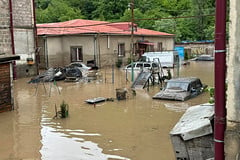
Between 2001 and 2021, up to 25 million hectares of forest, comparable to the size of the United Kingdom, were burned worldwide. A group of British and Australian researchers from the University of Cambridge and the Australian National University came to this conclusion. The research was published in the scientific journal Nature Geoscience (NatGeo).
According to the report, the number of annual wildfires has tripled in the past decade. The most affected were Brazil, Australia, Canada, US, and Russia’s Siberia.
One possible reason for the worsening fire risk in the world's forests is that logging makes forests more vulnerable to fire. This has been documented in parts of southeastern Australia, where untouched forests always burned at a lower intensity than deforested ones.
The wildfire situation could lead to wood and paper shortages in the foreseeable future, researchers say.
One way to solve the problem is to grow more wood on plantations. Such plantations already produce one-third of the main types of wood used commercially. However, forest plantations make up only 3% of the area of natural forests.
Another important strategy to protect forest resources will be to implement new technologies to more quickly detect and then quickly put out fires, such as those caused by lightning strikes.
New technologies and better planned and managed plantations will be essential not only to protect forests, but also to protect the flow of commercial timber and the industries that depend on it, the report said.






















